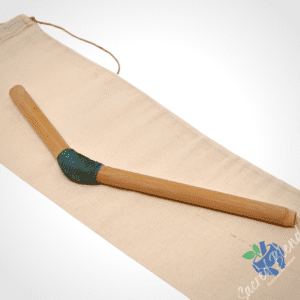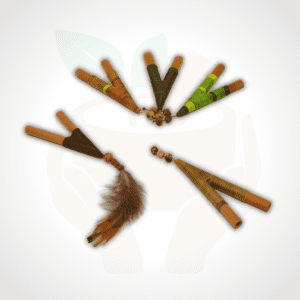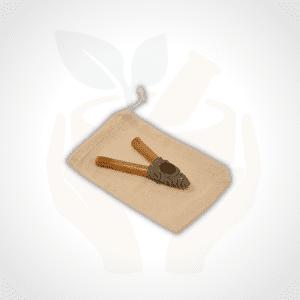Kuripe Baracara
Our applicators are handmade in Brazil and preserve all the wisdom and ancestral tradition.
Each piece is unique and has a connection with the beings of the forest, invoking the energies of wisdom and power inherited from their elders.
It is one of many ways to express their culture, contributing to their own families and communities, as well as spreading the beauty and richness of their culture and art.
PS: This product is 100% natural and handcrafted, therefore it may suffer alterations in relation to the photos shown on the website, and may vary in color, exact size, among other characteristics.
Tepi and Kuripe
The Hapé’s applicators, also known as “Tepi” and “Kuripe” are sacred instruments of indigenous origin generally made from wood, bamboo or bones and can carry ornaments such as feathers, crystals and seeds around it. It is from these elements, specifically from the animal or plant used to make the applicator, that the natives make the connection with nature, using this force and blowing techniques to apply the Hapé.
The use of Hapé aims to cleanse the energy field and the physical body, sharpen the mind, and maintain concentration and focus. It is during this medicinal practice that the Tepi and Kuripe gains prominence, because those instruments assist the use of hapé in a correct manner, avoiding any type of injury to the respiratory system.
Also according to indigenous traditions, the Hapé should be applied in both nostrils so that the person’s energy field does not become unbalanced.
The Tepi is an applicator that must be blown by another person, normally a shaman or the person conducting a ceremonial.
The Kuripe is a self-applicator, meaning that the person him/herself blows into his/her nostril.
Within the indigenous tradition, the hapé is not “inhaled”. It is always blown.
Blown into the nostrils by a shaman or another person or by yourself provokes a strong reaction in the inexperienced ones. Its effect is fast and afterwards the person feels a great sense of well-being and disposition, not to mention the cleaning of the airways that it provides.
It is also used for hunting, to remove “Panema” (laziness) and in the ceremony with Ayahuasca.
Blowing Techniques
For blowing, there are several breath intensities and styles to choose from.
The beija flor (hummingbird) and jiboiá (the boa constrictor) are the most prevalent blows.
The beija flower has a short and rapid blow, but the jiboia has a long and leisurely blow. The beija flor is a more upbeat tune that will wake you up. The Jiboia begins gently and gradually acquires power toward the conclusion. Smaller quantities are peaceful and contemplative; larger amounts gradually sneak up on you and acquire power at the end.
Finish the blow by putting the tip of your tongue to the roof of your mouth. This effectively concludes the application.
TIP: You can simply training your blow with the Tepi (without Hapé) to improve your technique.




Sacred Blend – Provided by Nature is committed to connecting the world with all the ancestry and traditions of the Amazon Rainforest through our partnerships with indigenous communities and others local partners.We offer a fair, sustainable and ethical trade with products of the highest quality. We are located in Florida – USA
Sign up to get news about
Sacred Blend. We don’t spam!

Copyright 2025 © Sacred-Blend
Reviews
There are no reviews yet.